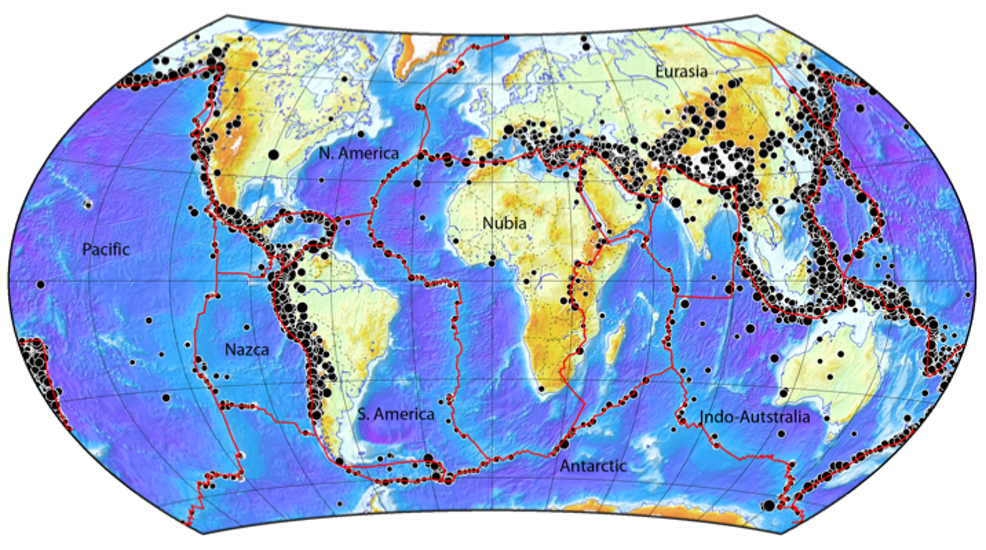An earthquake manifests itself by a vibration of the ground. The shaking can be very brief (seconds) and barely imperceptible, or on the contrary last longer (10s of seconds) and be strong to violent. In an environment where buildings and infrastructure are not properly constructed and where the population is not prepared, an earthquake – even of moderate strength – can be devastating. This was unfortunately the scenario of the January 12, 2010 earthquake in Haiti.

The origin of earthquakes is now well understood. Most of them are the result of a sudden slippage along pre-existing fractures (faults) within the Earth’s crust. This sudden movement triggers vibrations – like when a rubber band breaks – which are transmitted within the rocks over very long distances. If you are close enough to the earthquake, you can perceive the associated ground motion – which can be very strong. If you are further away, or if the amount of fault slippage is too small, you will not necessarily feel it. A seismometer, which is very sensitive devices, may however be able to detect it. Using multiple seismometers allows seismologists to determine the location and magnitude of earthquakes, even those that are not felt at all by the population.

This sudden fault slippage is, in most cases, the result of forces that are exerted at the boundaries between the tectonic plates as they move past each other. These forces cause the rocks to deform, very slowly and silently. Rocks of the Earth’s crust behave like a very, very stiff rubber band which can take up a significant amount of pushing or pulling as these forces build up over time. At some point, however, the force is large enough that the rocks are no longer able to deform slowly – the rubber band snaps! This manifests itself by a sudden break trough the rocks, which geologist call a “fault”. Slippage on the fault generates vibrations in the ground: an earthquake takes place. These vibrations can propagate through the Earth over thousands of kilometers if the strength (or magnitude) of earthquakes large enough.

The fault responsible for the January 12, 2010 in Haiti, was rapidly identified and the amount of slippage determined, mostly thanks to very precise measurements of ground motion using both seismometers and space geodetic techniques. It was about 20 km long and slippage occurred at depth between 3 and 18 km, almost under the city of Léogâne where damage was particularly significant. The magnitude of the earthquake was 7.0. The largest known earthquakes have a magnitude of 9.5 in Chile in 1960, magnitude 9.3 in Sumatra in 2004, or magnitude 9.1 in Japan in March 2011. The corresponding fault rupture length was on the order of 1000 km.

Earthquake prediction is currently impossible, contrary to claims from various charlatans claim, some of whom are seeking to operate in Haiti. Serious, verifiable, and reproducible earthquake research currently focuses (1) understanding the physical mechanisms that cause rocks to break at a given moment, and over what length, (2) early warning technology, which consists of detecting the P wave of an earthquake as early as possible in order to trigger an alert before the S wave – much more destructive – manifests itself a few tens of seconds later .
Additional ressources:
- In French: “How do scientists know the origin of earthquakes ?”